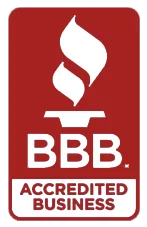Texas Property Code
Property managers and landlords in Texas are required by law to comply with state property codes. Chapter 92 of the Texas Property Code addresses property code specific to rental properties. With 9 sub chapters and 95 individual sections, Chapter 92 can be a little overwhelming. This post will highlight the major requirements of Chapter 92 of the Texas Property Code.
Property managers and landlords in Texas are required by law to comply with state property codes. Chapter 92 of the Texas Property Code addresses property code specific to rental properties. With 9 sub chapters and 95 individual sections, Chapter 92 can be a little overwhelming. This post will highlight the major requirements of Chapter 92 of the Texas Property Code.
Chapter 92 of the Texas Property Code consists of three main components:
- Rekeying all exterior door locks
- Security device installation on all exterior doors, sliding glass doors, and windows
- Smoke detector installation
Rekeying All Exterior Door Locks
Between every tenant, locks on all exterior doors must be rekeyed. This means the key, card, or combination must be changed on all doors allowing entrance to the home from the outside. This includes the front door, the back door, and the door from the garage to the home. Garage doors or doors from the garage to the outside may be excluded from rekeying, but any door allowing entrance to the home from the outside is required to be rekeyed.
Property managers have seven days from the time the tenant takes the property to complete rekeying of locks on all exterior doors.
Security Device Installation
It is important to consider all of a home’s locking devices. Every exterior door needs three components in order to be compliant to Texas Property Code: a keyed lock (deadbolt or doorknob, with the primary door requiring a keyed deadbolt), a one sided/keyless deadbolt (functions like a regular deadbolt from the inside of the door, but not visible in any way from the outside of the door), and a door viewer.
Sliding glass doors require a working latch or a security bar, as well as a pin lock. These security features must be mounted 48” or below, for the safety sake of children or disabled persons.
Regarding french doors, the primary door must have all the hardware required for any exterior door. The secondary door must have a bolt at the top that goes into a header, as well as one at the bottom that goes into the floor.
Windows are required to have at least one locking device (latch). This is to prevent windows from being opened from the outside.
Security Device Substitutions
A clear glass pane or one-way mirror is an approved substitution for a door viewer/peephole.
A ring bolt or drop bolt system or a metal bar across the inside of the door may be substituted for a keyless deadbolt. A chain latch, barrel bolt, or flip latch are NOT approved substitutions for a keyless deadbolt.
Exemptions Regarding Keyless Deadbolts
There are three exemptions to the keyless deadbolt requirement of Texas Property Code. They are:
- Dwellings that are part of a multi-unit complex in which the majority of tenants are over age 55 or have physical or mental disabilities.
- A tenant or occupant in the dwelling is over age 55 or has a physical or mental disability.
- The landlord is expressly required or permitted to periodically check on the well being or health of the tenant as a part of the written lease or other written agreement.
Smoke Detector Installation
Smoke detectors in a property must be less than 8 years old and in working order. A smoke detector must be located in the following areas:
- One in every bedroom of the property.
- One outside of every bedroom in the property. If multiple bedrooms use the same hallway, for example, one smoke detector in that hallway would meet this requirement. Not sure what constitutes a bedroom? Read our recent article.
- Every level of the home must have a smoke detector.
* Please see note regarding HB1168, an update to Texas Property Code regarding smoke detectors, effective as of September 1, 2011.
Conclusion
That’s a look at Chapter 92 of the Texas Property Code in a nutshell. You can view Chapter 92 in its entirety here.
To see some excellent visuals regarding Chapter 92 as well as security devices discussed in this article, check out this video.
Related Reading On Property Laws:
*Important – Property Code Update Effective Sept 1, 2011
HB 1168 applies to a home, mobile home, duplex unit, condominium unit, or any dwelling unit in a multi-unit residential structure that is being leased to a tenant. It essentially makes state law consistent with model codes (some local ordinances already require a smoke alarm in each separate bedroom) by requiring at least one smoke alarm to be placed in each bedroom or in the room used for sleeping, in the case of an efficiency unit. In addition, if multiple bedrooms are served by the same hallway, there must be a smoke alarm in the hallway in the immediate vicinity of the bedrooms; and if the unit has multiple levels, there must be a smoke alarm on each level.
View HB 1168 All Changes to Property Code
For properties occupied as a residence before Sept. 1, 2011, a smoke alarm may be battery operated and is not required to be interconnected with other smoke alarms. Owners will have until Jan. 1, 2013 to comply. For properties built after Sept. 1 2011 (new properties), local ordinances may impose stricter requirements.
Note: This legislation does not affect the alternative compliance method for a one-family or two-family dwelling unit, which may be satisfied by complying with the local code. [What this means is that if one to two-family units are already in compliance with their local code, they have complied with the smoke alarm section of the property code].
Also, if a landlord has installed a 1A10BC residential fire extinguisher or other non-rechargeable fire extinguisher required by local ordinance, the landlord must inspect the fire extinguisher at the beginning of tenant’s possession and within a reasonable time after receiving a written request from the tenant. Finally, a landlord at the landlord’s expense is required to repair or replace a non-functioning fire extinguisher, one that does not have the correct pressure as recommended by the manufacturer, or one the tenant has used for a legitimate purpose.










